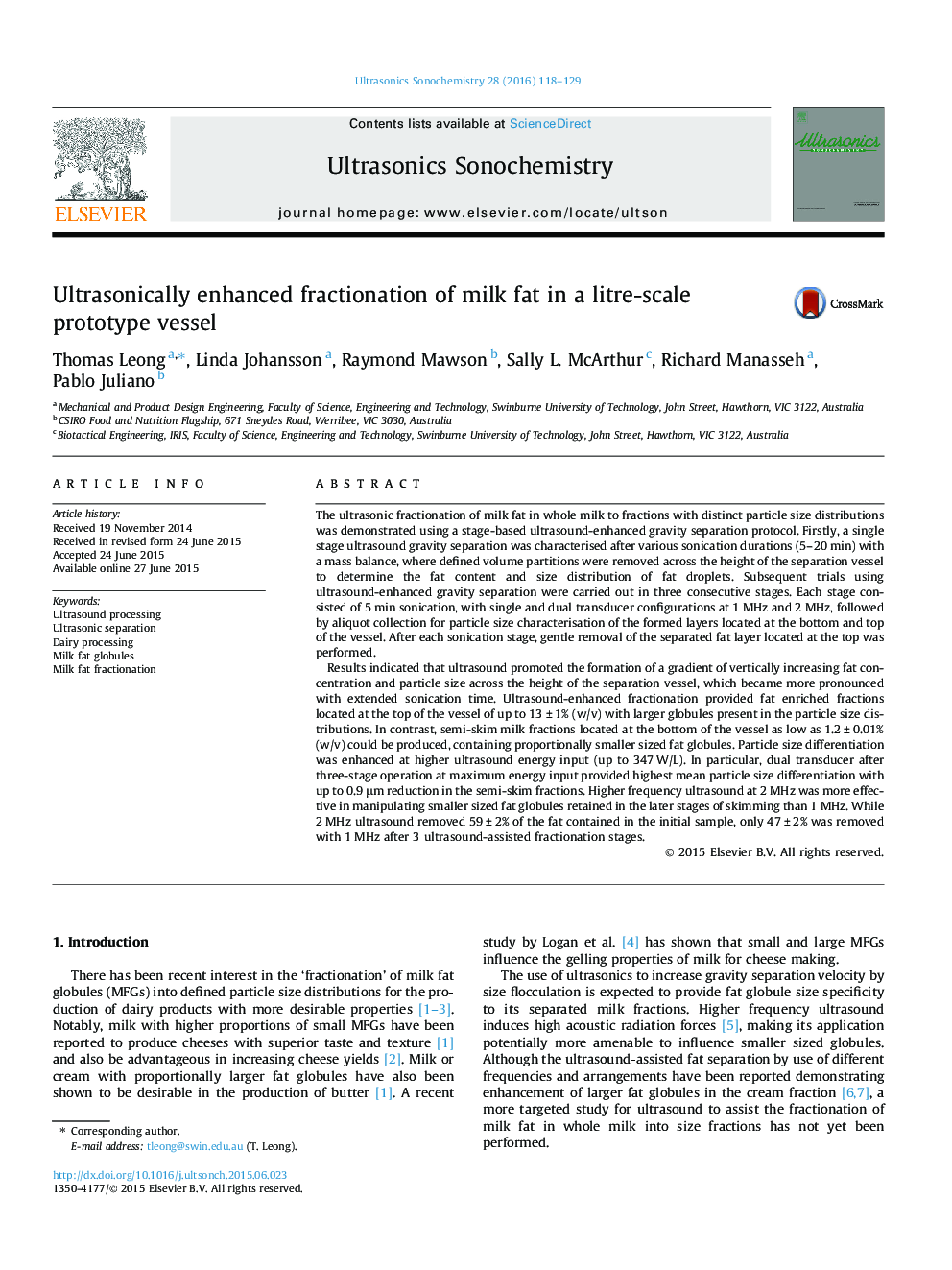| Article ID | Journal | Published Year | Pages | File Type |
|---|---|---|---|---|
| 1266547 | Ultrasonics Sonochemistry | 2016 | 12 Pages |
•Ultrasound promoted the separation of milk fat into fractions in a litre scale vessel.•Milk fat globules were fractionated by accelerated gravity separation under ultrasound.•Yields achieved by ultrasonic fractionation were ascertained by a mass balance.•Fat globule size distributions modified after single or sequential sonication.•Ultrasound fractionation has potential as novel dairy processing intervention.
The ultrasonic fractionation of milk fat in whole milk to fractions with distinct particle size distributions was demonstrated using a stage-based ultrasound-enhanced gravity separation protocol. Firstly, a single stage ultrasound gravity separation was characterised after various sonication durations (5–20 min) with a mass balance, where defined volume partitions were removed across the height of the separation vessel to determine the fat content and size distribution of fat droplets. Subsequent trials using ultrasound-enhanced gravity separation were carried out in three consecutive stages. Each stage consisted of 5 min sonication, with single and dual transducer configurations at 1 MHz and 2 MHz, followed by aliquot collection for particle size characterisation of the formed layers located at the bottom and top of the vessel. After each sonication stage, gentle removal of the separated fat layer located at the top was performed.Results indicated that ultrasound promoted the formation of a gradient of vertically increasing fat concentration and particle size across the height of the separation vessel, which became more pronounced with extended sonication time. Ultrasound-enhanced fractionation provided fat enriched fractions located at the top of the vessel of up to 13 ± 1% (w/v) with larger globules present in the particle size distributions. In contrast, semi-skim milk fractions located at the bottom of the vessel as low as 1.2 ± 0.01% (w/v) could be produced, containing proportionally smaller sized fat globules. Particle size differentiation was enhanced at higher ultrasound energy input (up to 347 W/L). In particular, dual transducer after three-stage operation at maximum energy input provided highest mean particle size differentiation with up to 0.9 μm reduction in the semi-skim fractions. Higher frequency ultrasound at 2 MHz was more effective in manipulating smaller sized fat globules retained in the later stages of skimming than 1 MHz. While 2 MHz ultrasound removed 59 ± 2% of the fat contained in the initial sample, only 47 ± 2% was removed with 1 MHz after 3 ultrasound-assisted fractionation stages.
